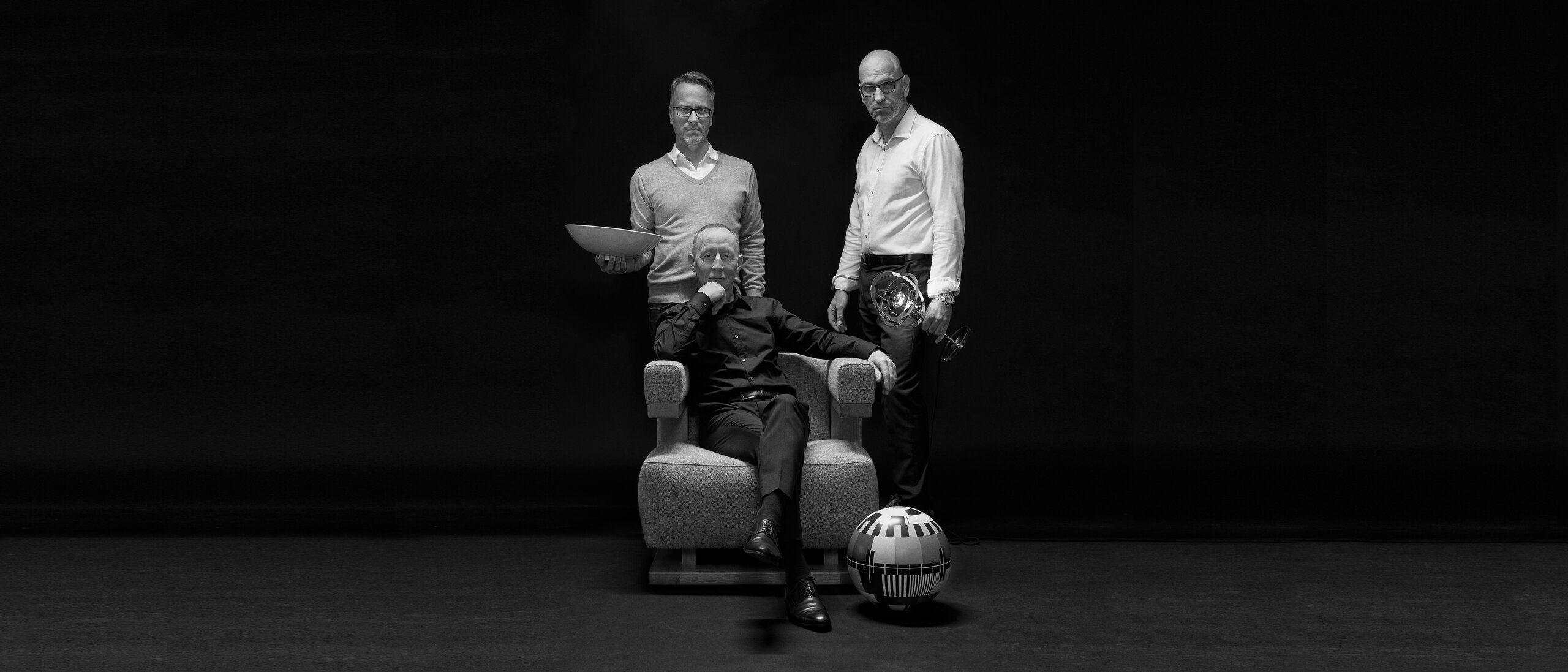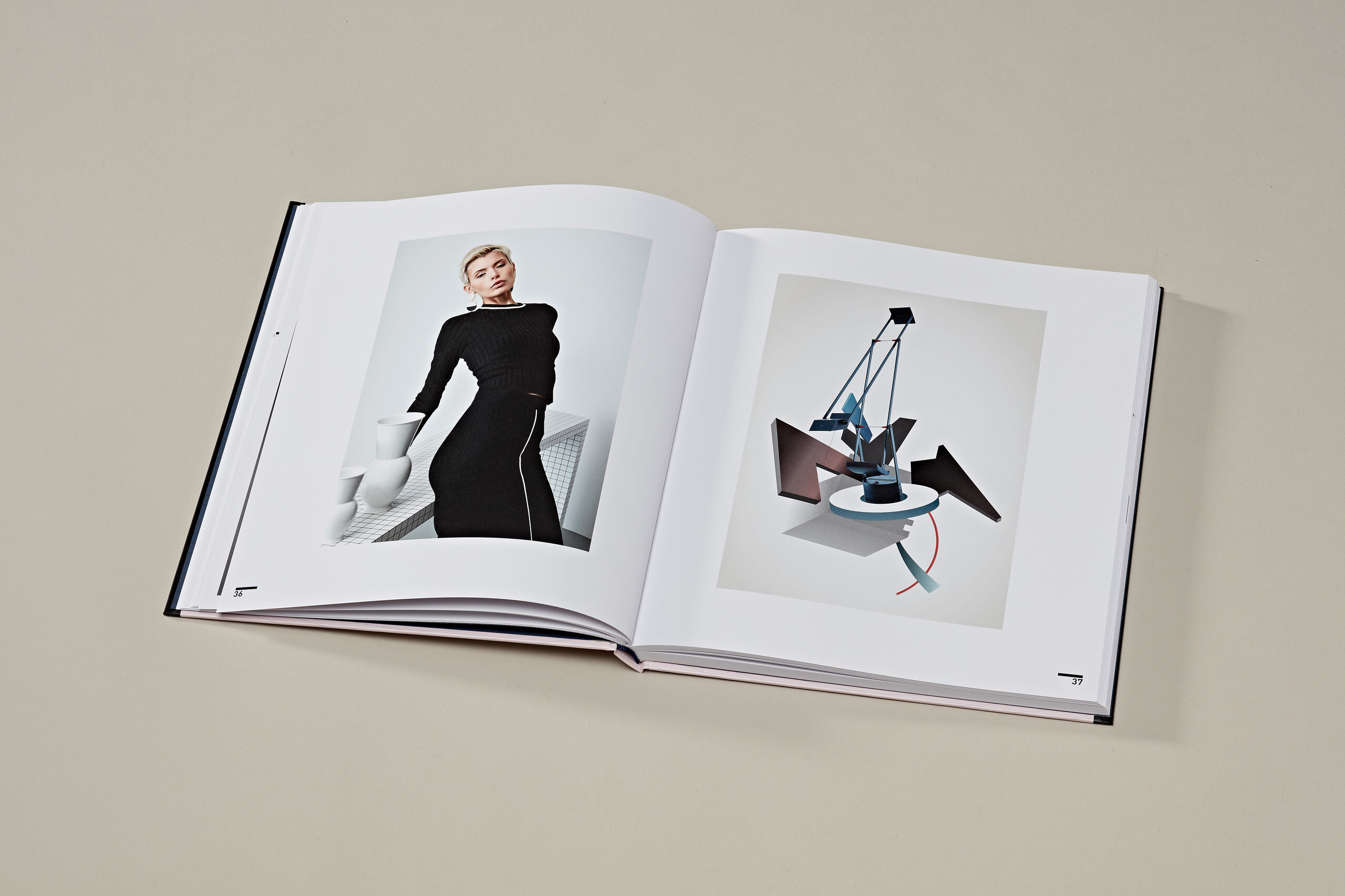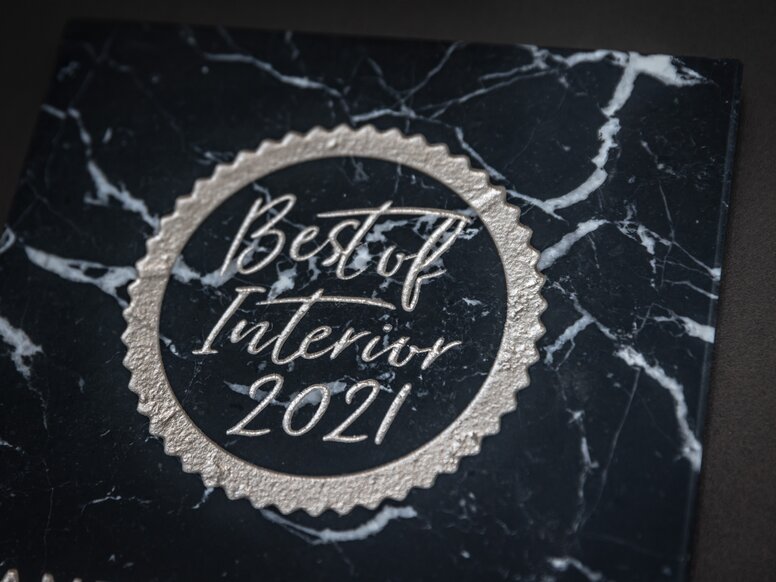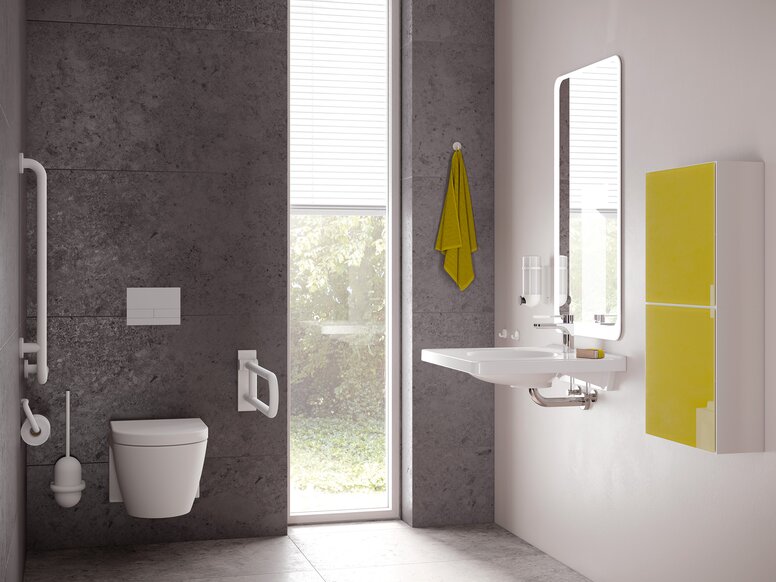HEWI MAG / Design
A homage to the Bauhaus and the HEWI door handle 111
On the occasion of the 100th anniversary of the Bauhaus, Olff Appold, Kai Brüninghaus and Jürgen Sandfort designed the vernissage Re:Form - a homage to 100 years of Bauhaus. The exhibition took place at stilwerk Hamburg, Berlin and Düsseldorf. This has now been followed by an art book about the exhibition and the Bauhaus.
We spoke to the makers about their passion for the Bauhaus style, their relationship with HEWI and with door handle 111.
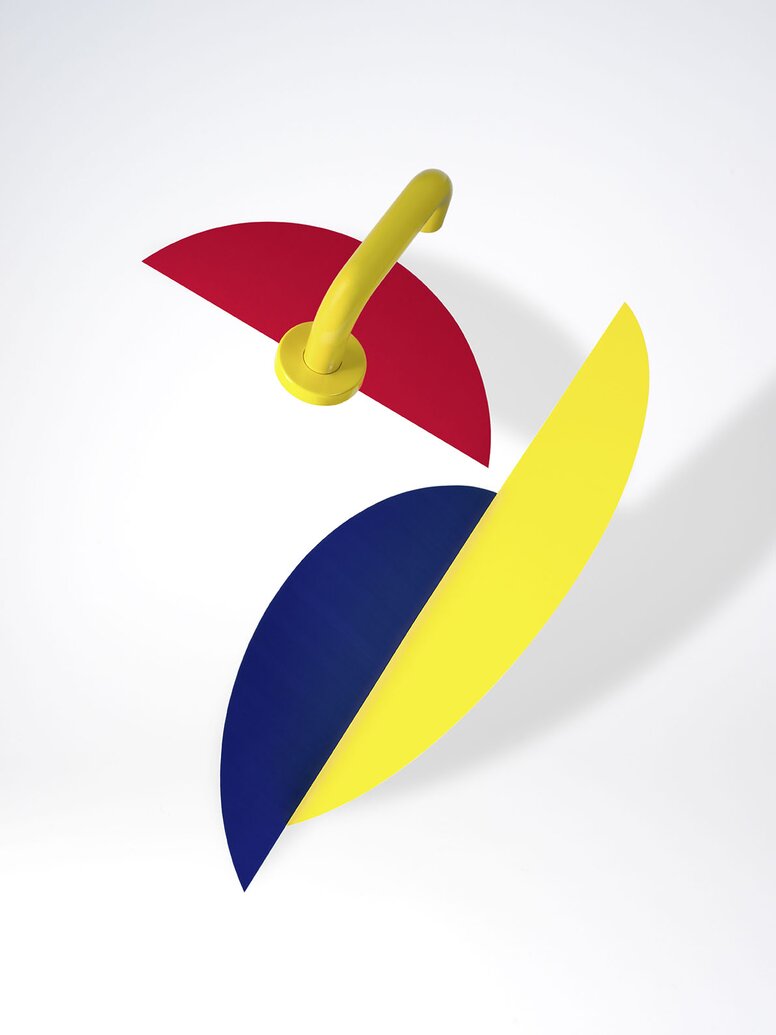
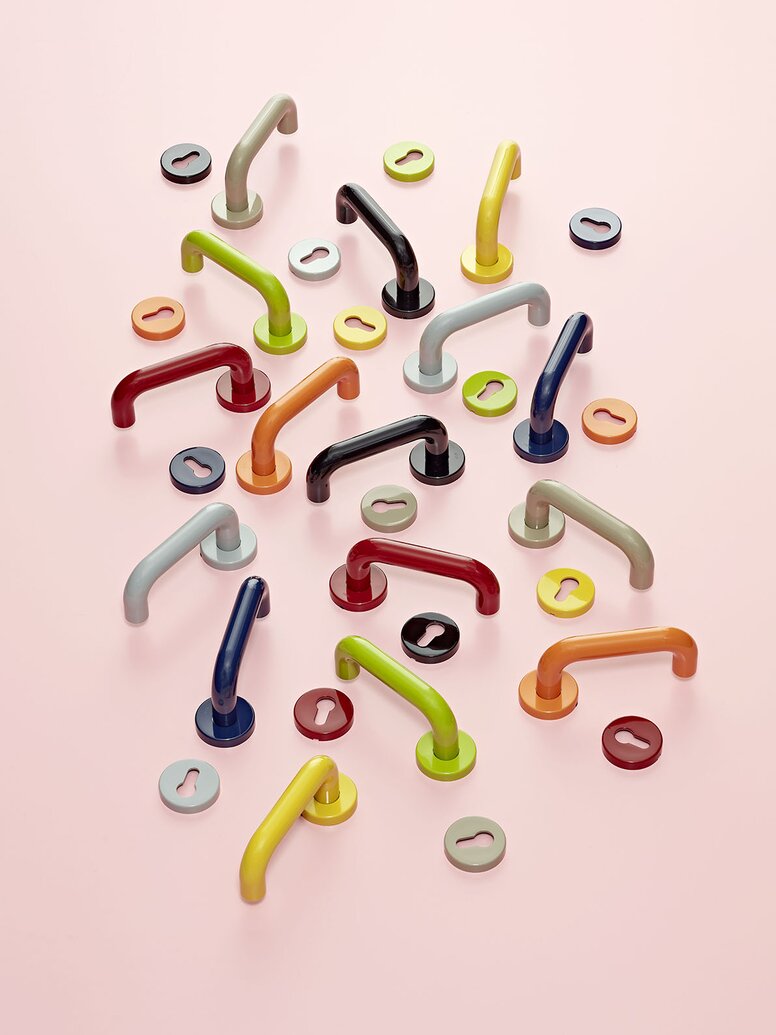
HEWI: Mr. Appold, Mr. Brüninghaus, Mr. Sandfort, you are the initiators of the vernissage Re:Form. What exactly is hidden behind the concept or how and where did you get the idea for the exhibition?
APPOLD: The idea of a homage to the famous Bauhaus school developed during a photo production for KPM - Königliche Porzellan-Manufaktur in Berlin. The vase Hall 3 of the Bauhaus student Marguerite Friedlaender inspired me to realize a free art project to show the revolutionary design developments from then until today. The vision of an exhibition in the classical and modern forms of expression brought me together with Kai Brüninghaus and Jürgen Sandfort, and this is how the interdisciplinary homage developed, in which we traced the Bauhaus school through our three expert opinions.
BRÜNINGHAUS: When Olff Appold presented his idea for the homage to me at the beginning of 2018, I spontaneously agreed, because the interdisciplinary nature of the Bauhaus had always been familiar to me and a multitude of ideas immediately came to my mind as to how one could formulate an artistic statement. For the transformation of the Bauhaus into today's virtual 3D world, I then spoke with Jürgen Sandfort, whose works I value very much in this medium.
SANDFORT: I joined them in the conception phase, because both felt that they wanted to give digital moving images a place in the exhibition as a means of expression today and to show that Bauhaus then and now also encompasses moving design.
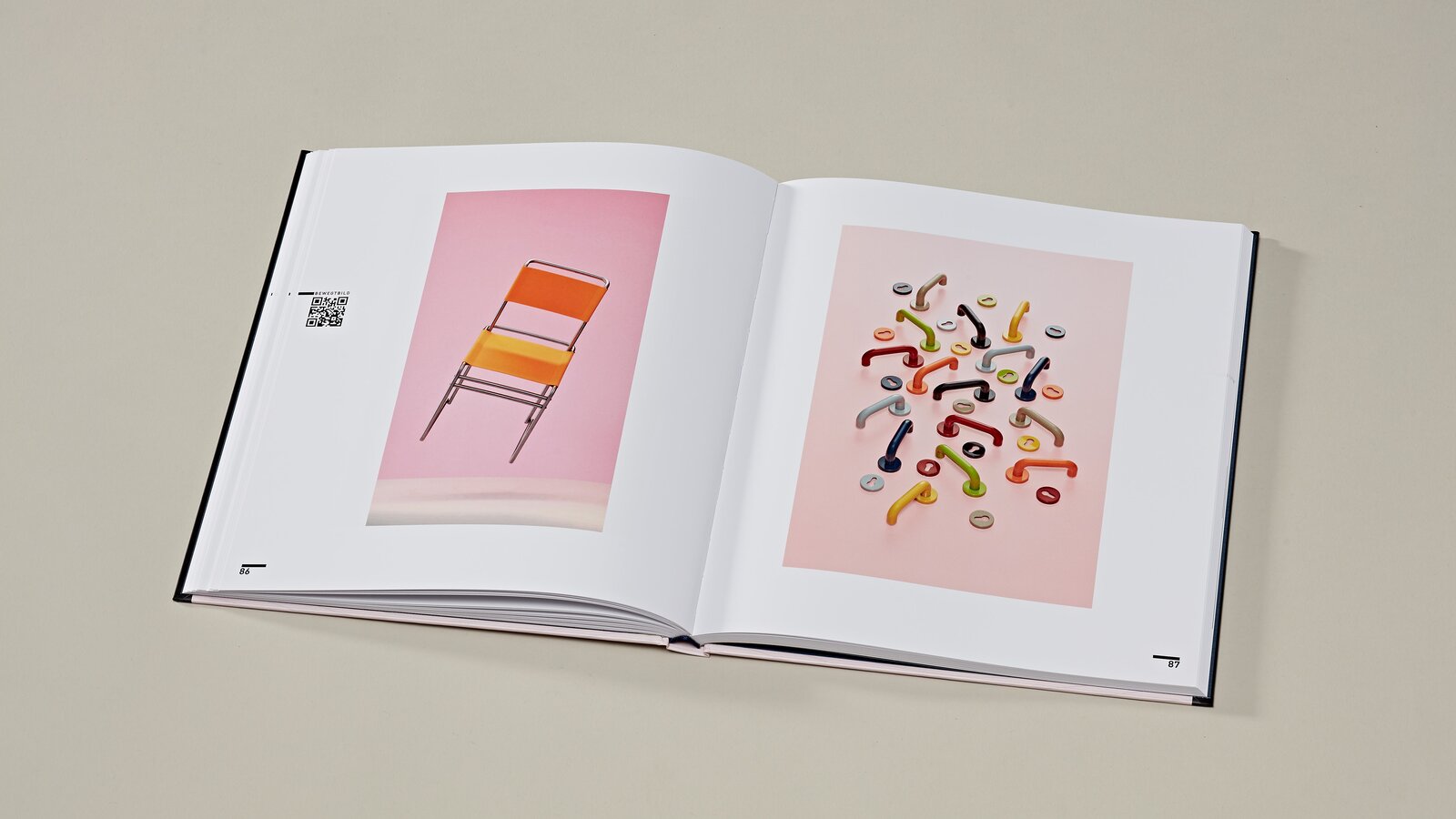
HEWI: What do you associate with the Bauhaus style?
APPOLD: The Bauhaus style has many facets and still stands for architecture, design and functionality today. A good piece of furniture, for example, makes it possible in a fabulous way to create an attitude towards life in a self-image and a sense of well-being. In the "cantilever chair", the body is comfortably held in space, one can concentrate on other important things and thoughts can also "swing freely".
BRÜNINGHAUS: For me, Bauhaus is not just a question of style, but above all a free, future-oriented way of thinking that cannot be locked away in drawers like architecture, design, art, advertising, etc. If one looks at the formal qualities of the Bauhaus, the designs are always distinguished by the fact that they are stringent, sensual in terms of material, consistent in terms of function and excellent in terms of execution. What fascinates me about the Bauhaus designs is the high degree of independence and the individual character that ultimately makes them unmistakable originals.
SANDFORT: Since my youth I have been a great fan of Bauhaus furniture and its functional and clear lines. In the beginning it was the tubular steel cantilever chairs that fitted so perfectly into the aesthetics of the 80s. But over the years, I realized how timeless the design elements of Bauhaus are and how easily these elements can be translated, integrated and reinterpreted into new design trends.
"The Bauhaus ideas of reduction to the essential, to simplify colour, form and function is and remains a modern idea." - Appold
HEWI: Does the Bauhaus idea influence you in your work?
APPOLD: Indeed, our search for traces of the effects of the Bauhaus school has shown and confirmed how much we are shaping our work today entirely in line with the Bauhaus idea. We work in an interdisciplinary way, we look for new approaches and solutions in visual communication and extract in an artistic way. In doing so, we make use of the exciting technical possibilities that will be available to us in 2020: photography, film, graphics, 3D design, digital signage.
BRÜNINGHAUS: In my work as a communication designer, I support companies and brands in developing their individual personality. To broaden the view and to identify or awaken additional development potential is also an expression of the Bauhaus idea of not remaining with the status quo of knowledge, but to seek and enter new territory.
As an artist, my free, non-commissioned work involves experimental photographic works in conjunction with graphic forms of expression. The Bauhaus idea unfolds its quality in the research-based development of media, themes and their visual evidence.
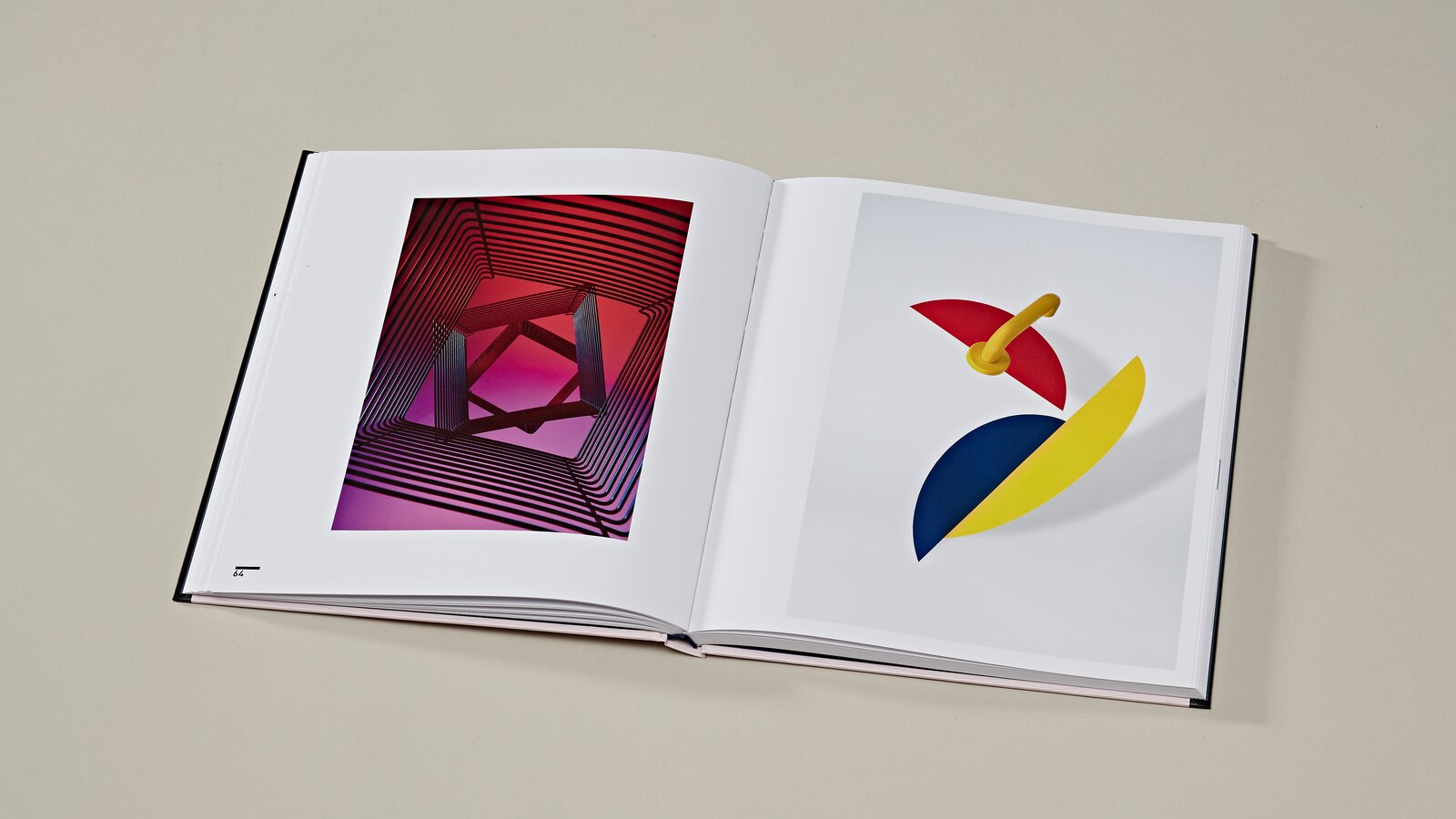
HEWI: Which aspects of the Bauhaus idea still have an impact on our everyday life today?
APPOLD: The Bauhaus ideas of reduction to the essentials, simplifying color, form and function is and remains a modern idea. Many of today's products are influenced by Bauhaus and have developed further. For example, the modern smartphone is also a product that fulfils the criteria of a Bauhaus design product.
BRÜNINGHAUS: The idea of "Bauhaus" is gaining undreamt-of topicality and relevance for me in view of the global pandemic and the associated change in perspectives. One hundred years ago, after the Spanish flu (1917), the First World War (1918) and the search for socio-political development, the Bauhaus condensed the currents of modernity into an attitude and developed important creative impulses. Similarly, we are currently experiencing a break through Covid-19 in which, even now, a few months after the beginning of the pandemic, I have the feeling of a pre-Corona period when I think back to 2019 and ask myself what aspects of the Bauhaus could be useful to us in the next 100 years.
My approach is to understand the term Bauhaus as an impulse and stimulus and to use the currently emerging new spaces of thought or changing perspectives to perceive new aspects in interdisciplinary, creative collaboration on pressing issues of sustainable coexistence. How can we, as societies with less, achieve more and learn from the past in order to better understand the future, so that new impulses can be set.
SANDFORT: At the beginning of our path, for me as for many, Bauhaus was influenced by architecture and, associated with this, also by furniture design. In our search for traces of the effects of the Bauhaus, I became increasingly aware of how many set pieces of the Bauhaus philosophy can be discovered everywhere in modern design. The fact that the Bauhaus was a real movement, which also included social and socio-economic aspects, also radiates to this day.
"As a particularly vivid example, which perfectly illustrates the impact of the Bauhaus over the last hundred years, I absolutely wanted to present the System 111 lever handle in our homage." - Brüninghaus
HEWI: Why do you associate HEWI with the Bauhaus?
APPOLD: HEWI works with the bent tube in very beautiful surfaces and colours and thus continues for me the idea of an Bauhaus design icon. The product becomes a statement, design, pleasant functionality and value are the main focus.
BRÜNINGHAUS: With the lever handle of the System 111, the company has written a piece of architectural history and created a striking design icon - an "original" that brings an unmistakable character. For me, the lever handle 111 embodies the ideas of the Bauhaus in form, material and quality. Its design, reduced to function using modern materials, the emotion of colour and the absence of decorative accessories is Bauhaus par excellence.
To be seen in the film: photo shoot for the Re:Form vernissage - a homage to 100 years of Bauhaus
HEWI: Why did the 111 door handle find a place in your exhibition?
APPOLD: When selecting the products for our homage, Kai Brüninghaus had the idea of including the door handle. I thought the idea was exactly right and important from the very beginning, because the HEWI door handle 111 stands for the interim period in Bauhaus research, the 1970s and 1980s.
BRÜNINGHAUS: As a particularly vivid example that perfectly illustrates the effects of the Bauhaus over the last hundred years, I absolutely wanted to present the System 111 door handle in our homage. It ideally embodies the theme of our homage and our search for traces of the effects of the Bauhaus.
SANDFORT: With its clear form and functionality, the door handle 111 is proof of the timelessness of the Bauhaus. Its design complements the overall picture without dominating it.
"In my school at that time, you could see which classroom you were in front of by the colour of the door handles, which was often very helpful." - Sandfort
HEWI: What do you think makes door handle 111 so special?
APPOLD: As a child I stood in front of a door handle 111 for the first time and thought it was a very good idea to reduce the door fitting into two circles. The end of the handle bent towards the door leaf is a statement and prevents slipping. In addition, the whole thing is a high-gloss hand flatterer in various colours. It is a very well-designed everyday product, manufactured to a high industrial standard and thus for me, in the best sense, a timeless design piece of the Bauhaus maxim.
BRÜNINGHAUS: The 111 door handle with its circle-based concept is very stringently designed. The radii, the resulting volumes and the overall form result in a self-contained, independent and above all a self-explanatory design principle without appearing mannered. I find the symbiosis of idea, form language, material and use simply fascinating.
HEWI: Is there a special memory of the 111 door handle in your life?
BRÜNINGHAUS: For me, the 111 door handle is a well-known companion of my youth in Marburg on the Lahn in the 1970s. I felt the door handle in my hand every day. It is likely that the new university buildings on the Lahnbergen, where the door handle 111 found its first extensive use, had a style-forming influence on the entire city.
In the process, regardless of an aesthetic evaluation, I again encounter a shaping of the Bauhaus idea. With the "Marburg Building System", a revolution and optimisation of building in university construction was realised in the 60/70s, which goes back to considerations of the 1920s and was still being discussed at that time for social housing. Intelligent design grids, construction modules, materiality, series production and variability are characteristics that are linked to Bauhaus principles from the building as a physical structure to its striking, door-opening originals in the interior.
SANDFORT: Naturally, the door handle in all colours at school. In my school, you could tell which classroom you were in front of by the colour of the door handles, which was often very helpful.
HEWI: We thank you for these exciting impressions of the history of the Re:Form vernissage - a homage to 100 years of Bauhaus and the art volume created in this context. Your remarks also gave us another look at our design icon System 111.
The artists
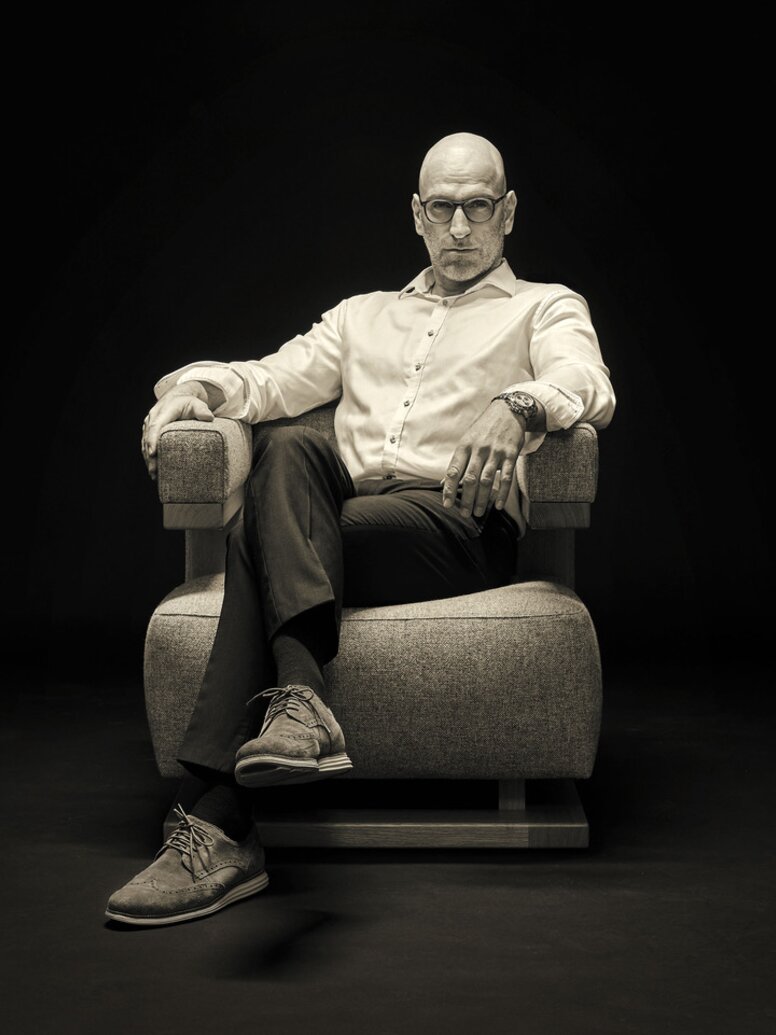
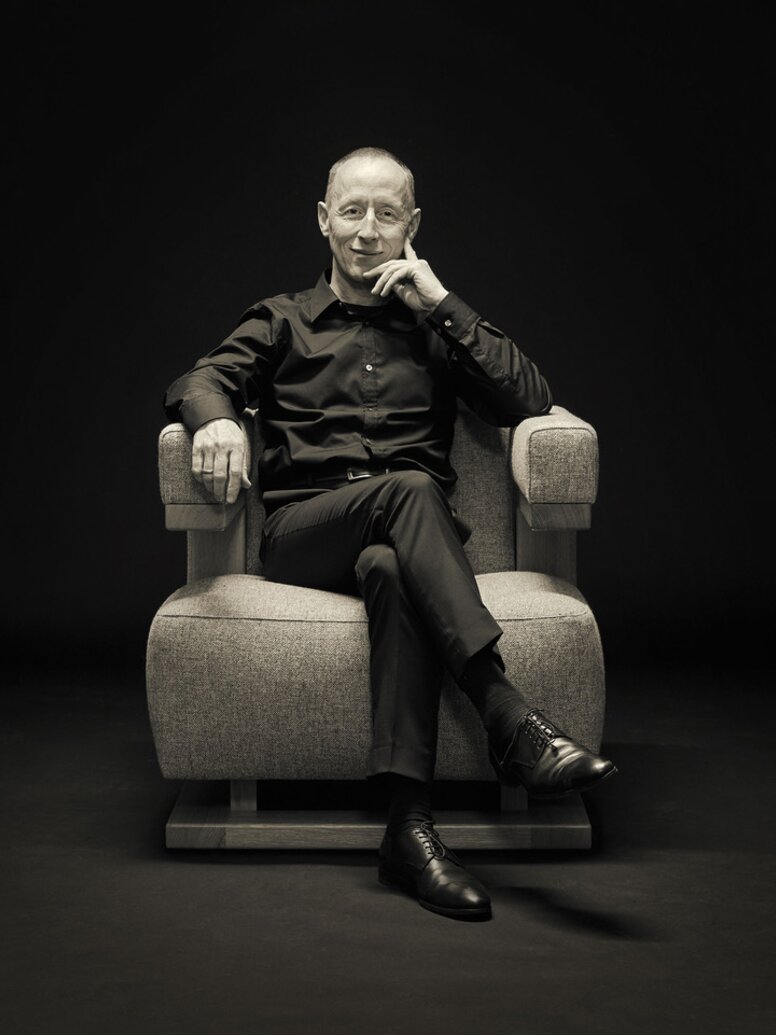
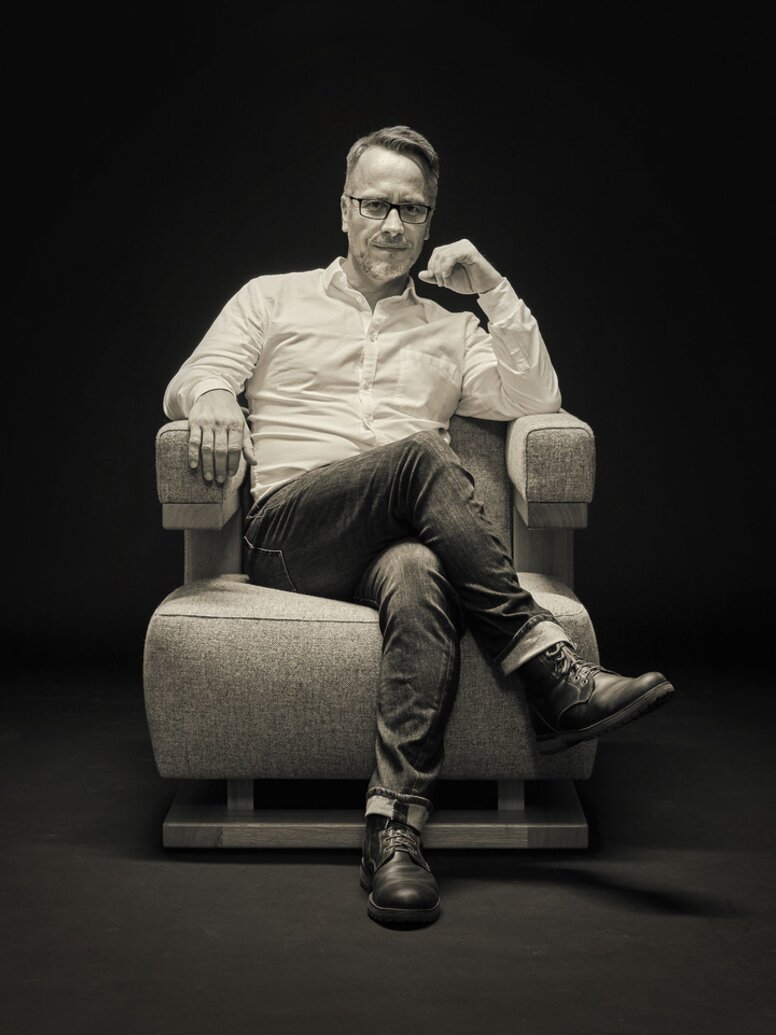
Olff Appold
Olff Appold has been working for advertising agencies and magazines in his loft studios in Hamburg-Altona for 21 years, developing and designing editorial articles as well as comprehensive company and product presentations. His clients include strong brands and manufacturers, so he works together with the agencies on highly aesthetic images and films of contemporary visual languages for all channels of brand communication.
www.olffappold.com
Instagram: @olffappoldphotography
Kai Brüninghaus
In keeping with the Bauhaus idea, Kai Brüninghaus has been fascinated by the combination of art and design since his studies in Cologne, where he took the unique opportunity to study free art and communication design in parallel. As a master student under Prof. Stefan Wewerka and with a design diploma in his pocket, he went to Hamburg, where he looked after prestigious brands from fashion and industry in the following years. Self-employed for 23 years, he has been developing tailor-made visual identities with his clients from industry, fashion and trade. Whether applied design or free art - creative passion, a love of experiment and professionalism characterize his style.
www.kaibrueninghaus.de
Instagram: @kaibhaus
Jürgen Sandfort
Jürgen Sandfort has been working as a freelance illustrator and graphic designer in Hamburg for 21 years. He developed his love for CGI at a very early age, when he held his Commodore VIC-20 in his hands at the age of 14. Today he works in the fields of CGI, design and final artwork for well-known brands from all sectors.
Instagram: @sandfort_visuals
Credits Pictures: Artist Trio: Appold / Brüninghaus / Sandfort
